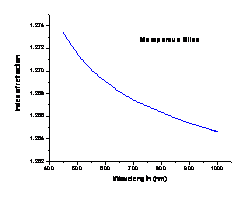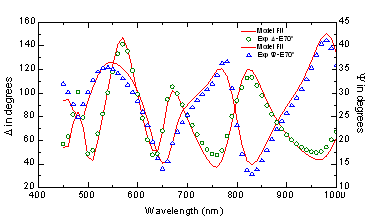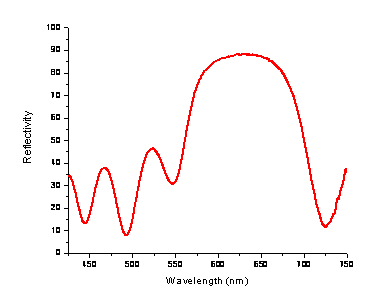www.acsprf.org
Reports: B1048489-B10: Photonic Crystals-based Hybrid Structures for Laser and Photovoltaic Applications
Frank C. Peiris, PhD , Kenyon College


Figure
1: Indices of refraction of
the two constituent materials of the dielectric stack. The higher
index material is the titania mesoporous layer with a porosity of ~30% (left
curve) while the lower index material is the silica mesoporous layer with a
porosity of ~40% (right curve).
Figure
2: Experimental (symbols) and
simulated (solid lines) ellipsometric data for the seven-period dielectric
stack. The triangles display
Ψ-spectrum while the circles display Δ-spectrum, both of which are
related to the Fresnel reflection coefficients of the entire structure.
Figure
3: Reflectivity spectrum of a 7-period dielectric stack composed of mesoporous SiO2 and TiO2 films.


